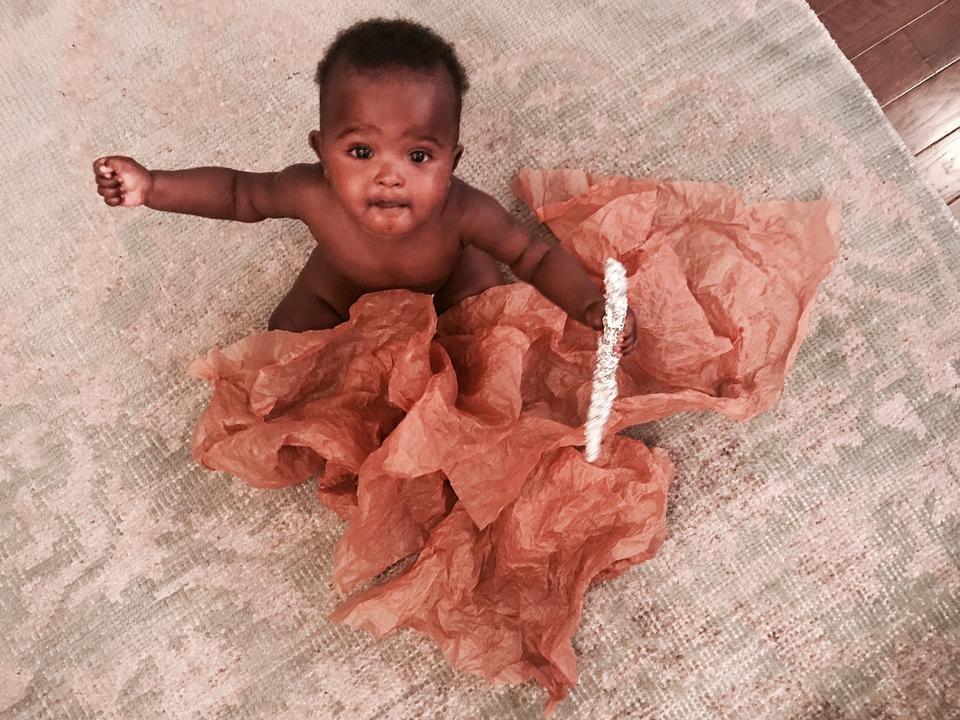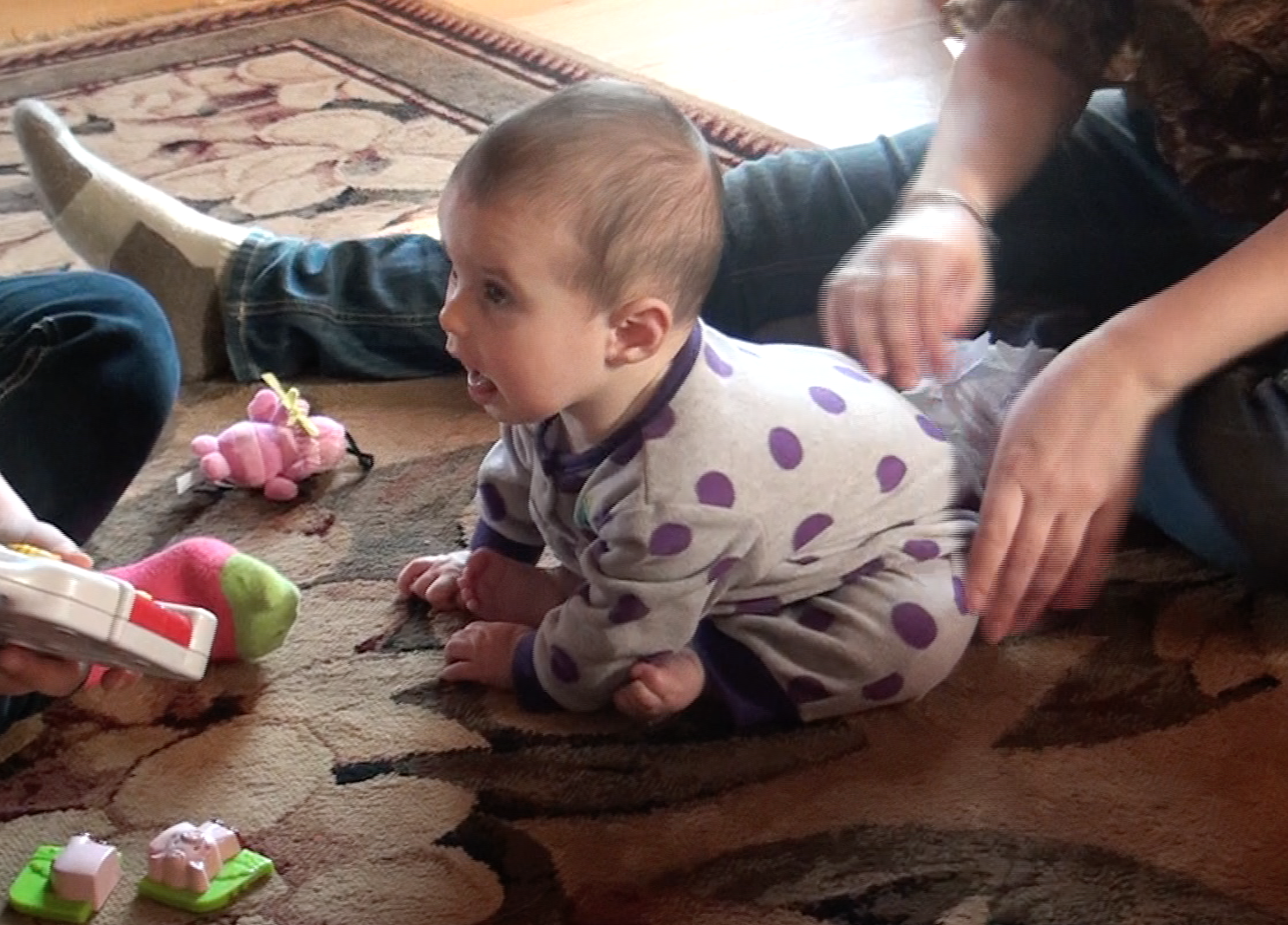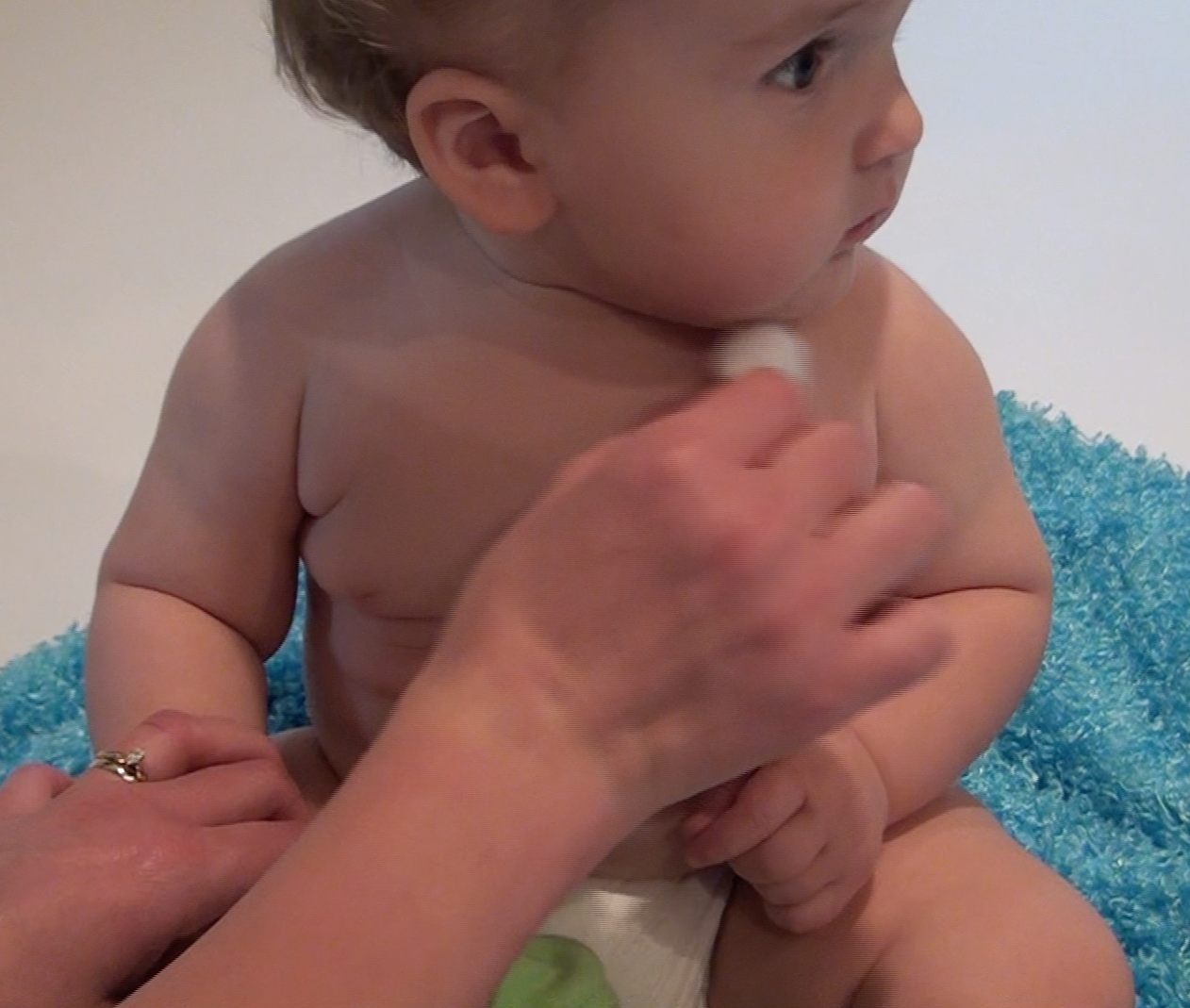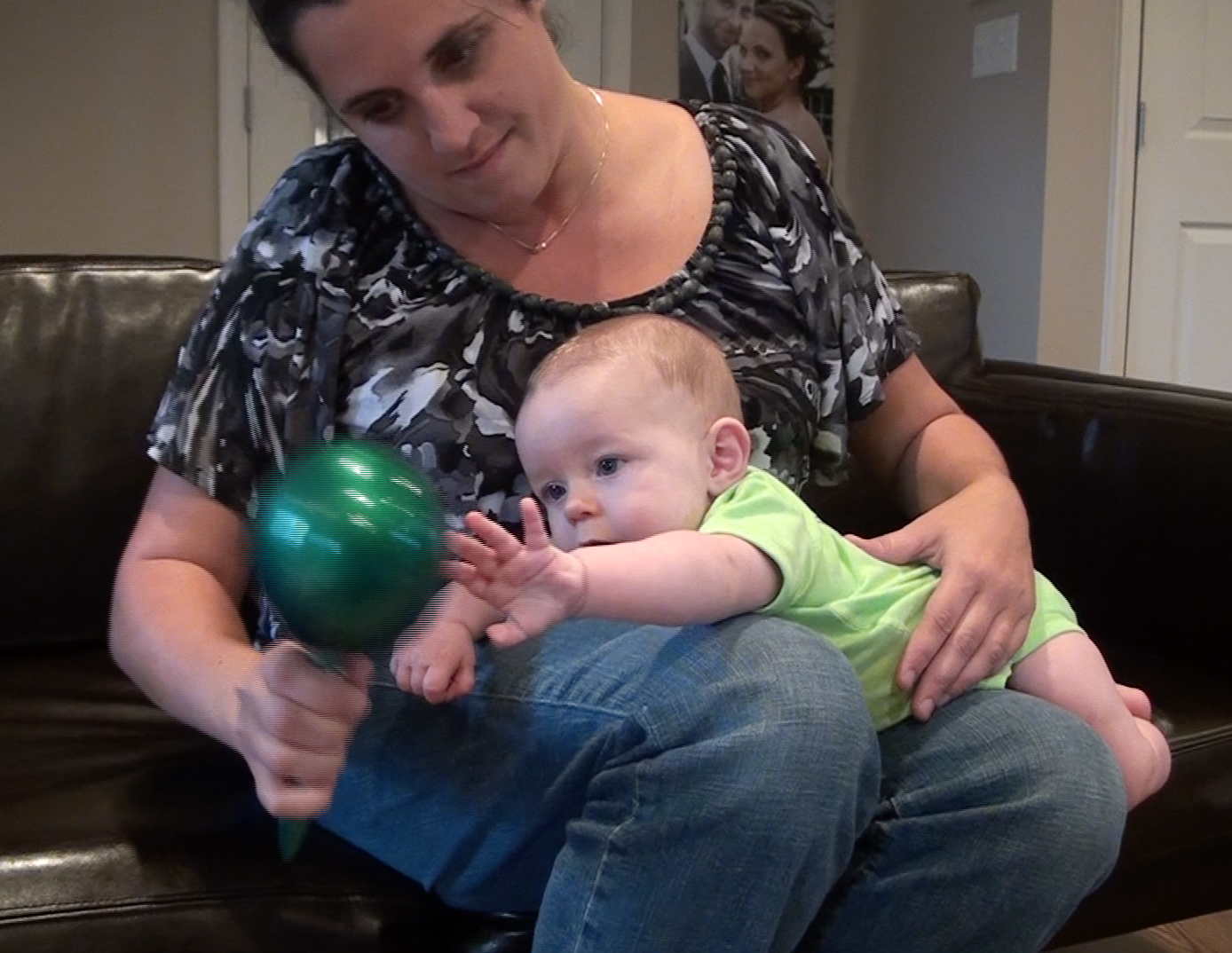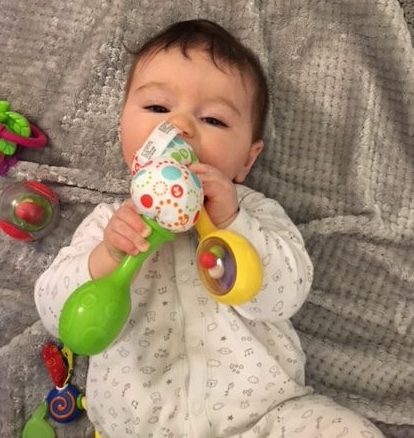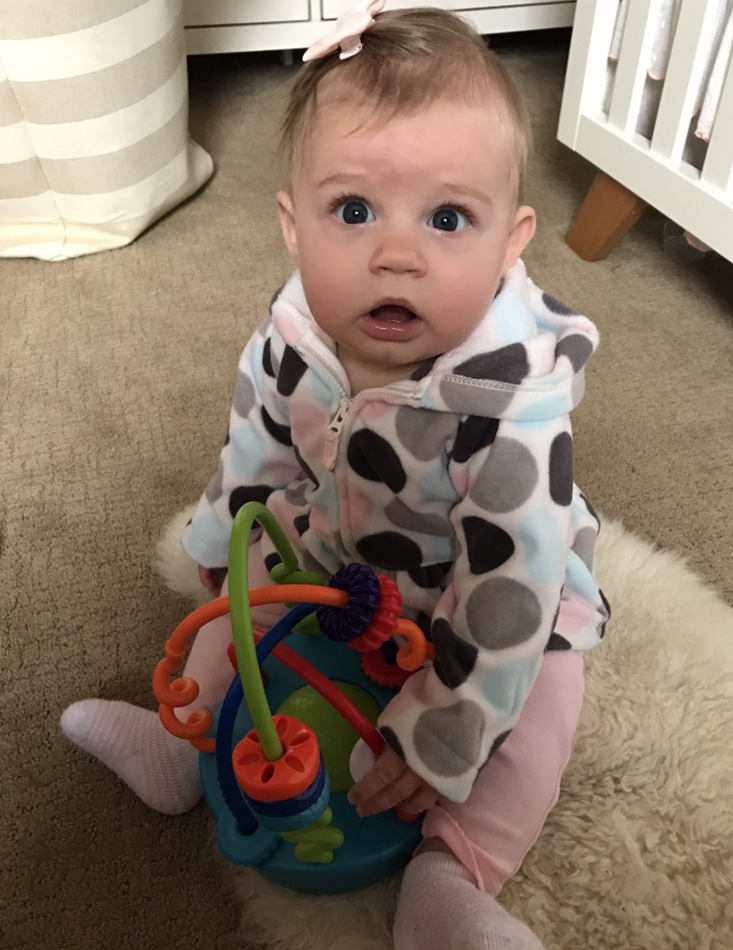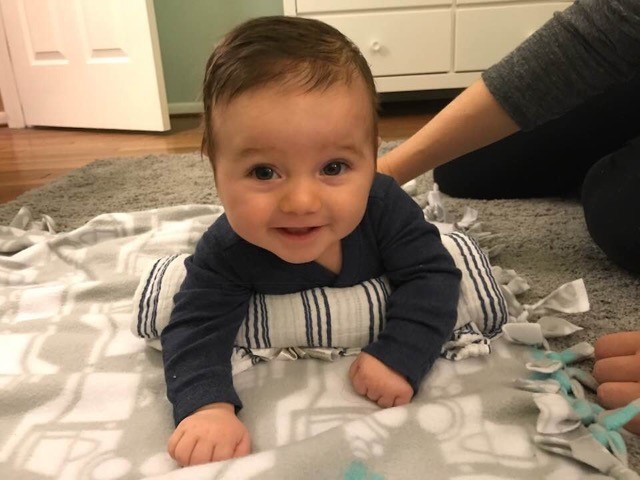STEM Milestones
4-6 month-olds are turning into little scientists, very curios about their world.
Key Indicators:
- Uses both hands to explore toys
- Enjoys toys with different textures
- Enjoys visually stimulating toys
- Begins bringing toys to mouth for exploration
Social/Emotional/Play Milestones
At 4-6 months babies are more interactive and beginning to turn head toward sounds, respond to their own name, respond to the word “no” and begin to make sounds to communicate.
Key indicators:
- Distinguishes emotions by tone of voice
- Is comforted by cuddling, rocking and soothing sounds
- Generally happy when not hungry or tired
- Enjoys a variety of movement
- Shows connection to care-giver by smiling and using good eye contact
- Enjoys interactions with others- begins to play peek-a-boo
- Raises hands to be picked up
Language/Communication Milestones
Babies at this age are using their own voice to express joy and displeasure, starting to babble and say a chain of consonants, and beginning to listen attentively to you when you talk.
Key indicators:
- Listens and responds when spoken to
- Begins to use consonant sounds when babbling such as “da-da-da”
- Uses babbling to get attention
- Makes different sounds to express different feelings
Coordination/Movement Milestones
4-6 month-olds are beginning to move! Don’t walk away from the changing table.
Key indicators:
- Rolls both ways (front to back first around 4 months, then side to back around 5 months, then back to front around 6 months)
- Sits with, and then without, support of her hands with rounded back
- Supports her whole weight on her legs when held vertically (but is not ready for exersaucer yet)
- Reaches with one hand
- Transfers object from hand to hand (palmar grasp reflex is mostly gone by 6 months)
- Uses raking grasp to pick up small items
- Grasps toys and releases toys
- Plays on tummy for longer periods of time
- Props on elbows during tummy time
Sensory Milestones Milestones
Babies at this age are using both hands to explore and bring objects to their mouth for further exploration.
Key indicators:
- Calms with rocking, touching and soothing sounds
- Enjoys a variety of movements
- Hearing is very acute, processes words and voices well
- Enjoys touching different textures
- Can distinguish different sounds and voices
- Prefers sweet tastes
- Prefers soft textures against skin
- Has over 40,000 tastebuds, so a very acute sense of taste
- Enjoys music and singing and being read to
- Enjoys a variety of movements
Cognitive Milestones
Babies at this age are more tuned-in to the world and taking a lot of interest to what is going on around them.
Key indicators:
- Finds partially hidden objects
- Struggles to get objects that are out of reach
- Enjoys social play
- Interested in mirror images
- Responds to other people’s expressions of emotion and appears joyful often
What Would a Pediatric Occupational Therapist Look For?
Pediatric Occupational Therapists will look for certain developmental milestones when reviewing children’s behavior.
- Most newborn reflexes are beginning to integrate or go away (you hardly see the startle reflex or the palmar grasp reflex any more)
- Interest in environment, alert and wants to explore
- Head should turn equally to left and right to avoid torticollis (stiffness in neck) and plagiocephaly (flat spots on head)
- Baby is enjoying tummy time and getting at least 30-60 minutes per day-even if it needs to be on parent’s chest
- Shows interest in holding own bottle
- Is self-regulating by calming with rocking and soothing sounds
- Making eye contact, smiling at care-givers and babbling back and forth
- Attends to books when read to
Time to Check with Baby’s Healthcare Provider
Mommy and daddy, be vigilant! You are your child’s advocate. If you see any of the following in your baby’s second or third month, it is time to notify your baby’s healthcare provider so your baby gets the proper attention.
- Seems very stiff, with tight muscles
- Seems very floppy, like a rag doll
- Head still flops back when body is pulled up to a sitting position
- Reaches with one hand only
- Refuses to cuddle
- Shows no affection for the person who cares for him
- Doesn’t seem to enjoy being around people
- One or both eyes consistently turn in or out
- Persistent tearing, eye drainage, or sensitivity to light
- Does not respond to sounds around him
- Does not turn his head to locate sounds by four months
- Doesn’t roll over in either direction (front to back or back to front) by six months
- Seems inconsolable at night after five months
- Doesn’t smile spontaneously by five months
- Cannot sit with help by six months
- Does not laugh or make squealing sounds by six months
- Does not actively reach for objects by six to seven months
- Doesn’t follow objects with both eyes at near (1 foot) [30 cm] and far (6 feet) [180 cm] ranges by seven months
- Does not bear some weight on legs by seven months
- Does not try to attract attention through actions by seven months
- Does not babble by seven months
- Shows no interest in games of peekaboo by eight months
- Poor head control
- Arches back or stiffens legs when pulled to sitting
Self-care Milestones for Mommy and Daddy
Just as babies have milestones, new parents need to reach important milestones to stay healthy and happy and have the ability to care for your baby!
- Use proper positioning for breast-feeding (remember, bring baby to you)
- Use proper lifting technique to protect your back
- If you are returning to work, plan ahead, ask your partner for help, try to get sleep on weekends
- Drink plenty of water
- Eat a balanced diet
- When help is offered, take it!
- Practice mindfulness-be in the moment
- Get some fresh air (take a walk with your baby when possible)
- Take time to connect with your partner
- Make time to connect with friends. Adult conversation is important!
References:
The American Academy of Pediatrics, Pathways, The American Occupational Therapy Association
